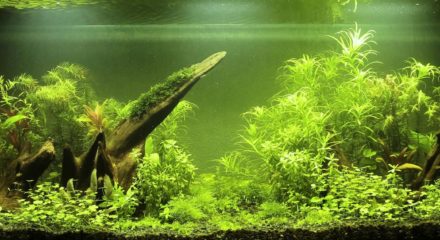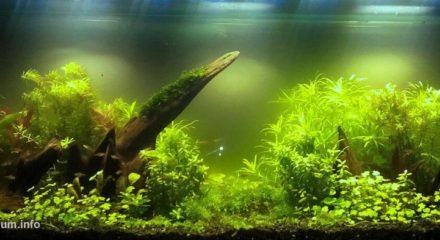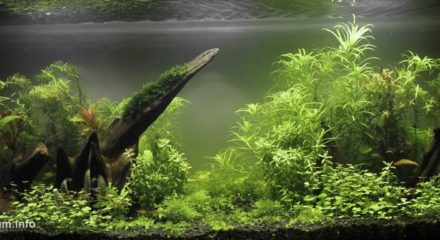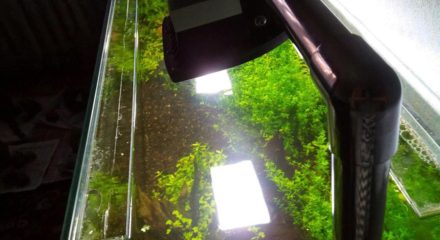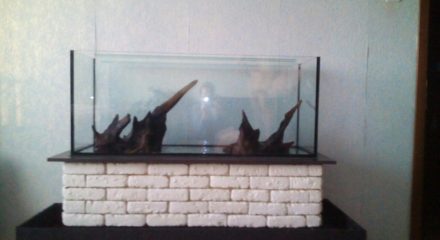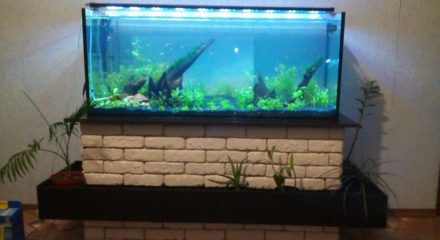Aquarium Volume: 240 L
Fish and invertebrates: Hyphessobrycon amandae
Plants list: Echinodorus “Ludin”, Eichhornia azurea, Hedyotis salzmannii, Hemianthus callitrichoides Cuba, Hemianthus micranthemoides, Hydrocotyle tripartita, Hydrocotyle verticillata, Ludwigia senegalensis, Riccia
Biotope description: Hyphessobrycon amandae inhabits Araguaia River basin in Brazil. Araguaia River flows through the Brazilian Highlands, in the middle reaches it makes two arms, forming one of the world’s largest river islands 300 km long. In the lower reaches there are the rapids, in the middle course it is navigable for 1,300 km. During the rainy season (November to May) it floods, in the dry season (June to September) it dries. In its area there are subequatorial forests, savannas and evergreen forests along its coast. The rich vegetation creates ideal conditions for animals, including this small freshwater fish Hyphessobrycon amandae.
Fish and invertebrates: Hyphessobrycon amandae
Plants list: Echinodorus “Ludin”, Eichhornia azurea, Hedyotis salzmannii, Hemianthus callitrichoides Cuba, Hemianthus micranthemoides, Hydrocotyle tripartita, Hydrocotyle verticillata, Ludwigia senegalensis, Riccia
Biotope description: Hyphessobrycon amandae inhabits Araguaia River basin in Brazil. Araguaia River flows through the Brazilian Highlands, in the middle reaches it makes two arms, forming one of the world’s largest river islands 300 km long. In the lower reaches there are the rapids, in the middle course it is navigable for 1,300 km. During the rainy season (November to May) it floods, in the dry season (June to September) it dries. In its area there are subequatorial forests, savannas and evergreen forests along its coast. The rich vegetation creates ideal conditions for animals, including this small freshwater fish Hyphessobrycon amandae.

